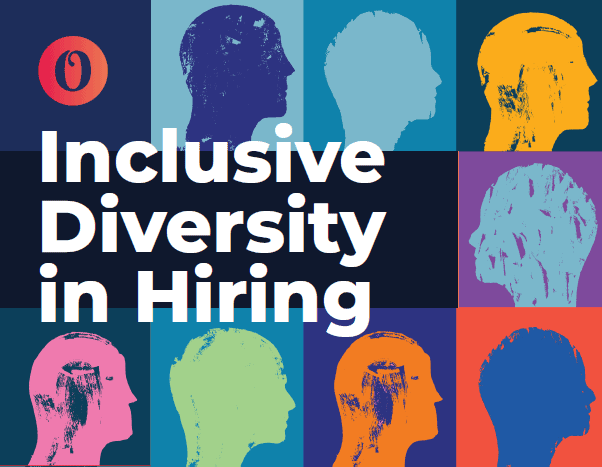Somerset NHS Foundation Trust works with Oleeo to streamline recruitment
NHS trust is adopting new recruitment software to streamline processes, improve experience for managers and candidates, and address equality, diversity and inclusion
Somerset NHS Foundation Trust is working with Oleeo to help support its recruitment processes and deliver a better experience for recruitment managers and candidates.
The trust, which employs 14,000 people across two acute hospitals, 13 community hospitals and a range of community, primary care and mental health services, is planning to go live with the new recruitment, applicant management, and reporting software in May.
This will help managers to use the system to recruit around 1,800 people every six months by creating job adverts that work for a diverse pool of potential applicants, including more personalised information for candidates, and creating better data on what is working.
Iain Reed, who works for the recruitment team at Somerset NHS Foundation Trust, explains: “Like other NHS trusts across the country, we face an ongoing challenge in recruiting the nurses and other colleagues to meet the demand for our services.
“We want to change the way we approach recruitment and we’re pleased to be working with Oleeo to develop some really innovative ideas to achieve this.
“Using Oleeo’s ATS software means we will be able to send candidates a video to show them all the things that are great about working here. We also want to improve equality, diversity and inclusivity across the trust.
“The new system will give us better data on which groups we are recruiting from, as well as automated features, to make sure that our managers are supported in writing adverts that don’t inadvertently exclude anyone from the hundreds of career paths we have to offer.”
Oleeo was founded in 1995, and it now delivers technology and talent acquisition support to more than 400 employers globally.
In the UK public sector, its software is used across central and local government and by 70% of police forces. Oleeo is also working with four NHS organisations, making Somerset NHS Foundation Trust its fifth health service client.
Samir Khelil, director at Oleeo, said: “As a company, we have been doing what we do for 27 years, and that is helping to transform the way that employers recruit. We want to do the same for the NHS, working with organisations like Somerset that want to collaborate with us to adjust the status quo.
“We don’t just want to work with people who want to keep doing things the same way. We want to transform what they do, and Somerset are completely aligned with achieving this.”
The Oleeo software will enable the trust to speed up recruitment by automating aspects of the recruitment process and giving managers and candidates access to dashboards that show where responses or checks need to be completed.
The trust was also looking for more flexibility to adapt the system for its needs, for a better user experience for managers and candidates, for better data, and for better support for its diversity, equality and inclusivity team.
The Oleeo solution has diversity built into its product stack, from a tool to pick up terms that could have an adverse impact on applications, to reporting tools that can help recruitment teams identify groups that are not coming forward in response to ads and adjust processes in response.
Iain Reed added: “There are around 350 different careers paths at our trust, from doctors, nurse and allied health professionals, to porters, cleaners and clinical coding and many in between.
“We put a lot of emphasis on training because we don’t want to lose good colleagues, but that makes it extremely important to get that initial recruitment right and that is what Oleeo will help us to do. We absolutely have the ambition to say: this is the way everybody should recruit to the NHS.”
Oleeo’s off the shelf solution is fully integrated with the NHS Electronic Staff Record and with NHS Jobs, and the company is keen to work with NHS customers as they come on board to create additional features to support them.
About Somerset NHS Foundation Trust
Somerset NHS Foundation Trust runs acute hospital services, community services, mental health and learning disability services and a quarter of Somerset’s GP practices. It runs services from two acute hospitals – Musgrove Park Hospital in Taunton, Yeovil Hospital in Yeovil – services in the community and services from the 13 community hospitals in the county, a range of mental health and learning disability services and Symphony Healthcare Services runs a quarter of GP practices in the county.
The trust is the result of two mergers. The first merger in April 2020, between Taunton and Somerset NHS Foundation Trust and Somerset Partnership NHS Foundation Trust, brought together acute services, community service and mental health and learning disability services. The second merger brought together acute services from both acute hospitals in the county and a large proportion of the county’s GP practices.
The trust believes that the broad range of services that it offers within one organisation puts it in a better position to provide mental and physical health services for our population, helping people to enjoy healthier lives with improved equitable access to the specialist care and treatment they need when they need it.
The trust is an integral part of the Somerset Integrated Care System and works with NHS, social care and voluntary sector partners in Somerset to plan and deliver services. We care for patients predominantly from Somerset but also from North Somerset, the west of Dorset and north of Devon.
About Oleeo
Oleeo provides talent acquisition technology to help companies and organisations attract, engage and hire amazing diverse teams. Using data-driven automation and machine learning, organisations can recruit smarter and more efficiently than ever before. Highly configurable to meet unique needs, Oleeo is trusted by many leading brands – www.oleeo.com
Contact
Susan Venables, Highland Marketing on behalf of Oleeo
Mobile: +44 (0)7971 166936









